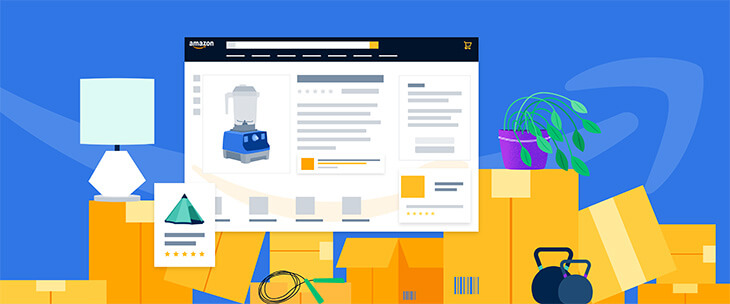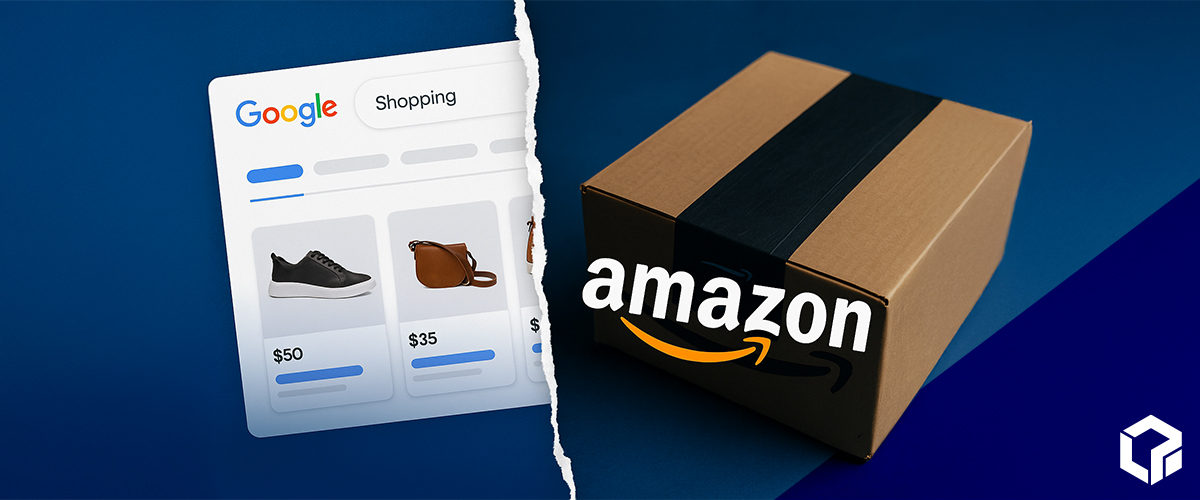In 2015, Amazon launched its first Prime Day event to celebrate the company’s 20th anniversary. Since then, Prime Day has expanded rapidly to become one of the largest online shopping events in the world as consumers rush to the site every year to take advantage of deep discounts on thousands of different brands and products. Prime Day 2020 was the company’s largest event to date, bringing in an estimated $10.4 billion over two days in October, which was more than a 45% increase over 2019.
If you sell products online, you understand what a force Amazon is in the marketplace. With Prime Day 2021 just a few days away, we’ve collected a few of the most eye-popping Amazon statistics that demonstrate why e-commerce marketers must account for this online powerhouse in their marketing strategies.
Amazon is a Massive Logistical Presence
With a market capitalization of $1.557 trillion, Amazon is the largest U.S. internet company and the fourth most valuable company in the world. Amazon built its reputation on fast, free delivery and has invested heavily in hiring and infrastructure over the years to continue meeting customer demands. Here’s what that looks like in actual numbers:
- At the end of 2020, Amazon employed nearly 1.3 million people (Statista).
- Amazon owns more than 75 fulfillment centers and 25 sorting centers across North America (techjury).
- According to the company’s 2019 annual report, Amazon leased more than 318 million square feet of real estate and owned 15 million square feet (millionacres).
- In 2019, Amazon’s transportation fleet included 30,000 branded delivery vehicles and 20,000 branded trailers (Car and Driver).
- Amazon plans to buy 100,000 all-electric delivery vans that will be in use by 2030 (Motortrend).
Growing Consumer Demand Drives Growth
With 300 million active users, Amazon built its logistical empire to meet staggering demand in the U.S. and abroad.
- Every month, amazon.com sees 213 million unique U.S. visitors (Statista).
- Amazon Prime — the company’s premium service — has 200 million subscribers worldwide and 142.5 million U.S. subscribers.
- Prime members spend an average of $1,400 per year (Statista).
All these loyal buyers drive incredible results for Amazon and its shareholders.
- In 2020, Amazon saw $386 billion in net revenue and $21.33 billion in net income (Statista).
- For Q1 2021, Amazon reported revenue of $108.5 billion (Investopedia)
Third-Party Sellers Thrive on the Platform
In late 2000, Amazon launched Marketplace, which opened its platform to third-party sellers who take advantage of its brand recognition, massive organic traffic and existing e-commerce technology. As Amazon has grown, so have the number of companies selling on the platform. According to the company’s own data, more than 1.9 million small and medium-sized businesses sell on Amazon, accounting for nearly 60% of its retail sales.
A Powerful E-Commerce Player
Amazon’s massive infrastructure, endless resources and an incredible catalog of available products make the company an unmatched e-commerce force that captures a tremendous amount of online traffic.
- Amazon holds nearly 50% of the U.S. e-commerce market (techjury).
- 57% of Amazon’s online traffic is direct, meaning customers come to the site first (similarweb).
- Amazon holds a 90% market share in five shopping categories: batteries, kitchen and dining, home improvement tools, golf and skincare (techjury).
Marketers Must Know how to Compete
All this data paints a picture of a company that is an inescapable online presence. Most marketers who sell online either compete with Amazon directly or use the platform to reach consumers. That’s why it’s critical to understand how the company affects online purchasing behavior.
For example, one study found that 66% of online shoppers begin their searches on Amazon. Another study found that 70% of Amazon shoppers stick to the first page of search results. That means third-party sellers on Amazon must use effective search practices to show up higher in search results and draw in more potential buyers, or they’ll miss out on available revenue.
E-commerce sellers competing with Amazon also need to understand what they’re up against. In 2019, Amazon spent $6.8 billion on advertising, a 35% increase over 2018. A significant portion of those dollars goes towards paid search advertising, which increases competition for clicks and makes online advertising more expensive for everyone.
There’s also evidence that a growing number of online retailers are treating Prime Day like Black Friday and running their own promotions, understanding that online consumers will be in a buying mood. During Prime Day 2020, traffic to Amazon accounted for 40.6% of total traffic to the top 100 websites. That number is down considerably from 49.3% during Prime Day 2019, which indicates that consumers are buying elsewhere.
What’s in Store for Prime Day 2021?
Amazon delayed their 2020 Prime Day for several months due to the pandemic but still saw incredible sales gains over 2019. At this point, it’s unclear how the 2021 event will unfold. However, one thing is certain: Amazon will do whatever it can to drive sales. So as we wait for the deals to unfold and watch for early revenue results, remember, it’s never too early to plan for Prime Day 2022.




